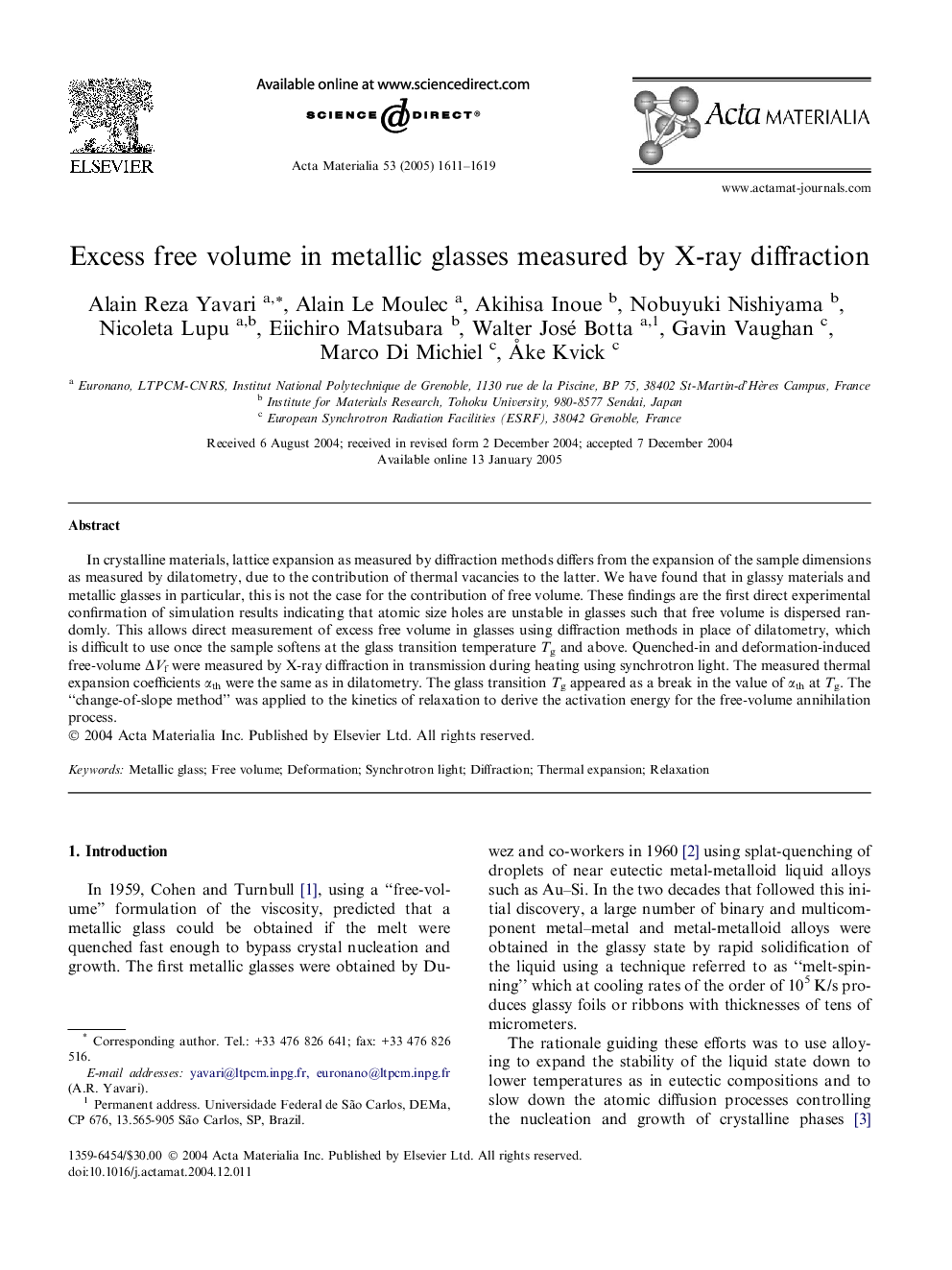| Article ID | Journal | Published Year | Pages | File Type |
|---|---|---|---|---|
| 10621107 | Acta Materialia | 2005 | 9 Pages |
Abstract
In crystalline materials, lattice expansion as measured by diffraction methods differs from the expansion of the sample dimensions as measured by dilatometry, due to the contribution of thermal vacancies to the latter. We have found that in glassy materials and metallic glasses in particular, this is not the case for the contribution of free volume. These findings are the first direct experimental confirmation of simulation results indicating that atomic size holes are unstable in glasses such that free volume is dispersed randomly. This allows direct measurement of excess free volume in glasses using diffraction methods in place of dilatometry, which is difficult to use once the sample softens at the glass transition temperature Tg and above. Quenched-in and deformation-induced free-volume ÎVf were measured by X-ray diffraction in transmission during heating using synchrotron light. The measured thermal expansion coefficients αth were the same as in dilatometry. The glass transition Tg appeared as a break in the value of αth at Tg. The “change-of-slope method” was applied to the kinetics of relaxation to derive the activation energy for the free-volume annihilation process.
Keywords
Related Topics
Physical Sciences and Engineering
Materials Science
Ceramics and Composites
Authors
Alain Reza Yavari, Alain Le Moulec, Akihisa Inoue, Nobuyuki Nishiyama, Nicoleta Lupu, Eiichiro Matsubara, Walter José Botta, Gavin Vaughan, Marco Di Michiel, Ã
ke Kvick,
